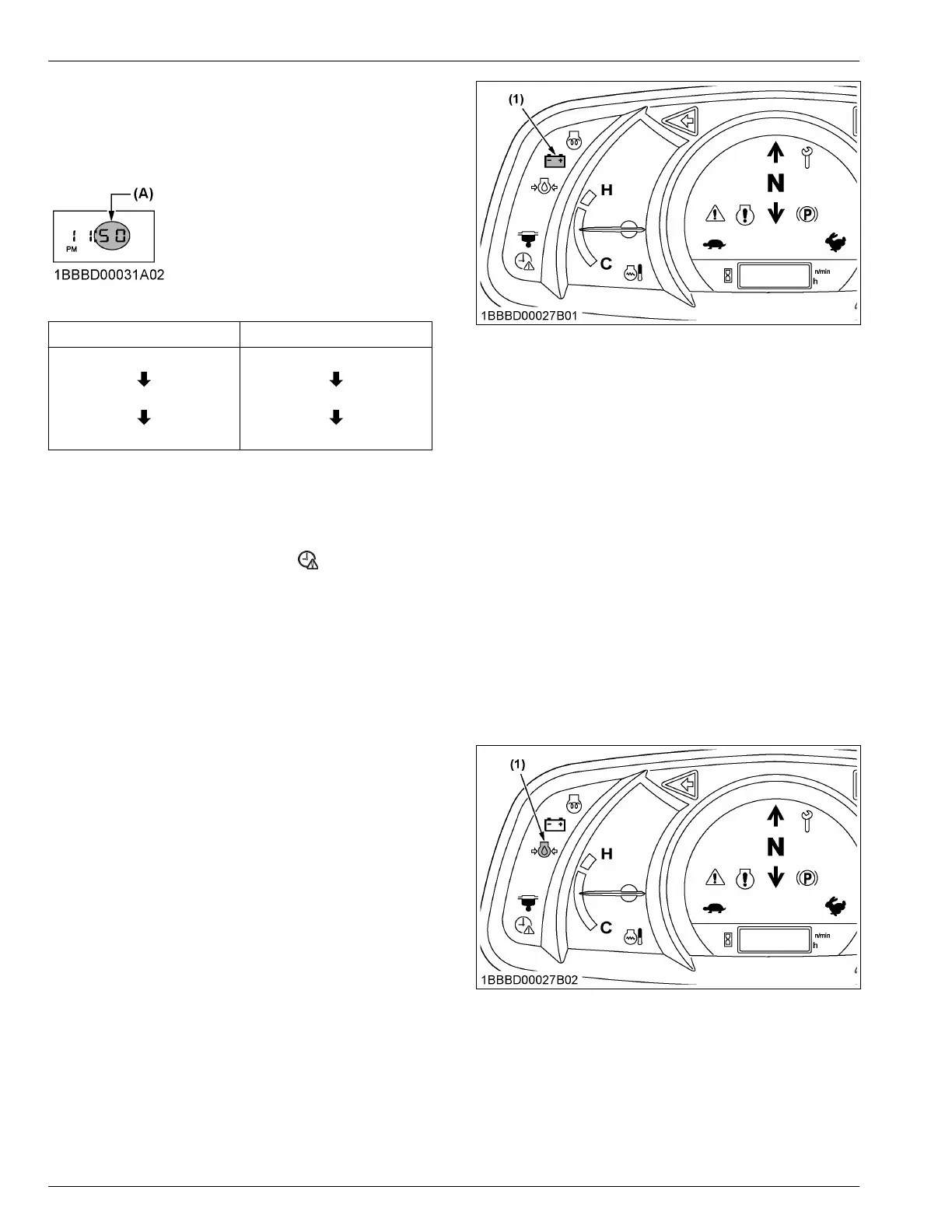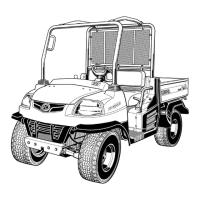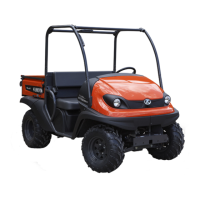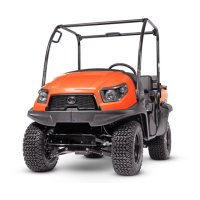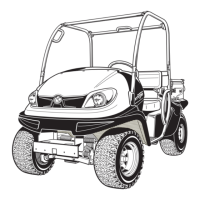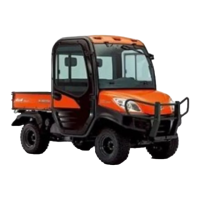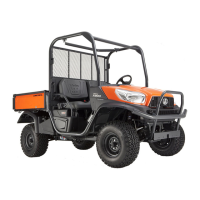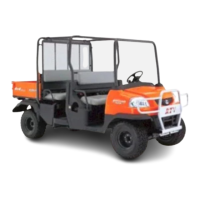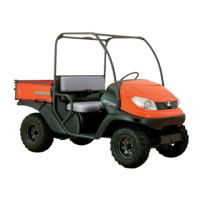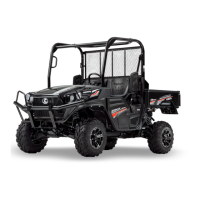8. Set the minute.
• Press
the user-setting-switch and the numeric
setting will be smaller.
• Press the display-selector-switch and the
numeric setting will be larger.
(A) Blinking
User setting switch Display selector switch
50
49
48
50
51
52
If you press the display-selector-switch for a long
time, the new settings will be decided.
NOTE :
• If
the battery is disconnected, the clock-
setting-request-indicator
(yellow) will
blink for requesting to set the clock.
CHECKS FOR THE INDICATORS
1. Battery charge indicator
The battery-charge-indicator lights up if the charging
system fails with the engine running.
When
the starter switch is turned to [RUN] with the
engine off, the battery-charge-indicator lights up, and
when the engine starts, the battery-charge-indicator
goes out. If the battery-charge-indicator stays on with
the engine running, stop the engine and check the fan
belt.
NOTE :
• If there is disconnection or failure in the
charging system when the starter key is turned
to [RUN], the following symbol will appear.
(1) Battery charge indicator
2. Engine oil pressure warning
indicator
The engine-oil-pressure-warning-indicator lights up due
to
failure of the lubricating system with the engine
running.
When the starter switch is turned to [RUN] with the
engine off, the engine-oil-pressure-warning-indicator
lights up, and when the engine starts, the engine-oil-
pressure-warning-indicator goes out. If the engine-oil-
pressure-warning-indicator stays on with the engine
running, stop the engine and check the level of the
engine oil.
NOTE :
• If there is disconnection, failure or breakdown
in the lubricating system when the starter key is
turned to [RUN], the following symbol will
appear.
(1) Engine oil pressure warning
indicator
3. Grow plug indicator
With the starter key at the [RUN]
position, the preheat
status of the engine is indicated.
CHECKS BEFORE STARTING THE MACHINE
CHECKS FOR THE INDICATORS

